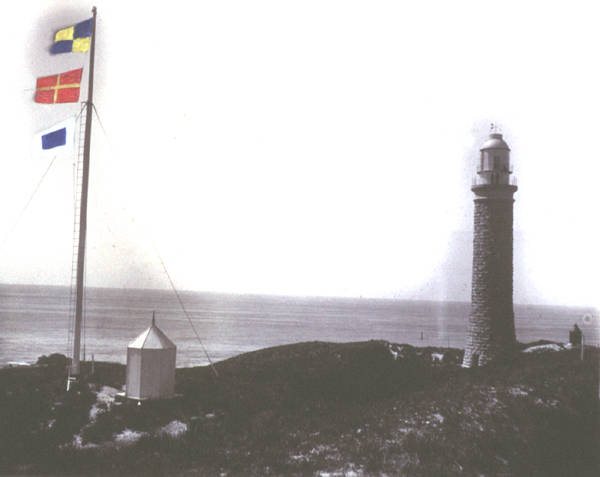 |
 |
|
Lighthouses
Lighthouses were vital to the colony's survival. Ships sailing around the treacherous coastline were guided at many locations including Cape Wickham; Goose, Swan and Deal Islands; Eddystone Point; Cape Bruny; Cape Sorell; Table Cape and Mersey Bluff. Lighthouses operated progressively on whale oil, colza, kerosene, gas, electricity and solar power. The Derwent Light or 'Iron Pot' at the mouth of the River Derwent has operated since 1832 (preceded only by South Head, Sydney). The original temporary structure was incorporated into a convict-built, obloid, three-storey tower designed by John Lee Archer. Tasmania's second lighthouse was established in 1833 at Low Head, the entrance to the Tamar River. It was maintained by a superintendent and three convict assistants who were locked in their quarters at night. Its foghorn, installed in 1929, could be heard 9.6 kilometres away at sea. Australia's most southerly lighthouse is at Maatsuyker Island, where the highest wind speed recorded is 112 knots. Operational in 1891, the original light was worked by clockwork machinery which had to be wound by hand at hourly intervals. The Tasman Island light, constructed of cast-iron plates in 1906, is among the highest of Australian lighthouses at 276 metres above high water. To reach the island, everything – including people, livestock and stores – was transported by flying fox to a platform 27 metres above sea level and then hauled up the incline by a horse-drawn tramway. Offshore keepers and their families needed to be self-sufficient as supply ships only called once or twice a year. They used pigeons for urgent messages until the introduction of wireless communication in the early 1930s. Automation began in the 1920s, and the last classic lighthouse was de-manned in 1996. In 2004 approximately 600 navigation aids were available to assist mariners. Further reading: K Stanley, Guiding lights, Hobart, 1991; J Ibbotson, Lighthouses of Australia, Melbourne, 2003; www.lighthouse.net.au/lights. Wendy Rimon |
Copyright 2006, Centre for Tasmanian Historical Studies |
